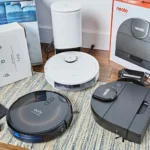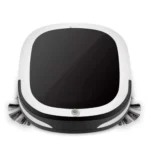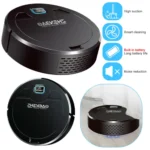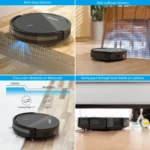Have you ever heard of smart vacuums? These innovative devices have revolutionized the way we clean our homes, offering a new level of convenience and automation. One of the key elements that make these vacuums so smart is the anti-collision sensor technology that they employ. These sensors allow the devices to navigate around obstacles and avoid collisions, making them a powerful tool in cleaning efficiency. However, with the technological advances in this field, it can be perplexing to keep up with the latest innovations and their impact on the market. In this article, we’ll explore the evolution and role of anti-collision sensors in smart vacuums, the advantages they offer, the latest sensor innovations, and how they are changing the smart vacuum cleaner market.
The Importance of Smart Vacuums
Smart vacuums are the new age cleaning devices which have revolutionized the way we clean our homes. These are automated, intelligent and equipped with advanced technologies that allow them to clean floors, carpets, and upholstery with minimal human intervention. The importance of smart vacuums can be understood from the fact that they are designed to save time, effort and energy while providing a higher level of cleanliness than traditional cleaning methods.
Smart vacuums come with various features that make them stand out from conventional vacuum cleaners. One of the most significant features is the integration of anti-collision sensors. These sensors are designed to prevent the vacuum from colliding with furniture, walls, and any other obstacles that could cause damage. The use of anti-collision sensors has been a major breakthrough in the development of smart vacuums.
With the help of anti-collision sensors, smart vacuums can understand their surroundings and move accordingly. These sensors work by sending out signals that bounce back when they hit an object, allowing the vacuum to detect its distance from objects and avoid collisions. As a result, these devices can move around the house, cleaning every corner with great precision, without bumping into or damaging any objects. They also have drop sensors that prevent them from falling off stairs or high ledges.
The importance of anti-collision sensors in smart vacuums is evident in the fact that they ensure the safety of your home, your furniture and your vacuum cleaner, while also preventing any accidents that could occur. These sensors also help to improve the cleaning efficiency and reduce overall maintenance costs as the vacuum does not need to be repaired or replaced as often.
In fact, anti-collision sensors have become such an integral part of the smart vacuum formula that manufacturers are constantly looking for new ways to improve their performance. The latest innovation in anti-collision sensors includes lidar, ultrasonic, camera-based, infrared and laser sensors. These sensors work in various ways to help smart vacuums navigate their surroundings and avoid collisions, resulting in a more effective cleaning experience.
The importance of smart vacuums in today’s world cannot be overstated. These devices have changed the way we clean our homes, and anti-collision sensors have played a critical role in their development. With the integration of advanced sensor technologies, smart vacuums are becoming more efficient, safer, and more popular than ever before. To learn more about anti-collision sensors and their impact on the smart vacuum cleaner market, check out our article on /tech-anti-collision-sensors/.
The Evolution of Anti-Collision Sensors
Anti-collision sensors have come a long way since their inception. The main goal of these sensors is to prevent collisions with obstacles and ultimately, ensure better functionality of smart vacuums. Initially, early models of smart vacuums used mechanical whiskers to detect obstacles. These whiskers would bend when they encountered an obstacle, signaling the vacuum to change its direction. However, this primitive technology had limited effectiveness and did not meet the growing expectations of users.
As technology advanced, electronic sensors began to replace mechanical whiskers. Drop sensors became one of the first electronic anti-collision sensors to gain popularity. These sensors were designed to detect stairs, and when a vacuum would approach the edge of stairs, the sensors would alert the vacuum to stop and change its direction. This was a significant improvement over the mechanical whiskers, which could not detect stairs and could tip the vacuum over.
Over time, different types of sensors were developed to help the smart vacuum cleaner navigate around obstacles more efficiently. Ultrasonic sensors use high-frequency sound waves to detect objects, and they are better at detecting soft or small objects. Infrared and laser sensors emit beams of light to detect obstacles, and they are best for identifying large, solid objects. Lidar sensors, which use lasers to scan an area in 360 degrees, provide the most accurate detection and 3D mapping of the surroundings.
Camera-based sensors are a relatively recent innovation in the world of anti-collision sensors. They use cameras and computer vision algorithms to detect obstacles and create maps of the environment. These sensors are especially useful for identifying small and detailed objects and for capturing images and video footage of the room.
With the advancements in anti-collision sensor technology, smart vacuums have become more effective in detecting obstacles and avoiding collisions. However, there are still certain challenges that users face with these sensors. For example, some sensors may struggle with accurately detecting high-pile carpets or dark hardwood floors. Additionally, the sensors may require cleaning and maintenance to ensure optimal performance.
To learn more about troubleshooting anti-collision sensors, cleaning them properly or understanding the pros and cons of anti-collision sensors in smart vacuums, take a look at the related articles on our site /drop-sensors-smart-vacuum/, /anti-collision-sensors-smart-vacuum-pros-cons/, /troubleshooting-anti-collision-sensors/, /cleaning-anti-collision-sensors-smart-vacuum/ and /anti-collision-sensors-flooring/.
The Role of Anti-Collision Sensors in Smart Vacuums
Without anti-collision sensors, smart vacuums would be unable to navigate through spaces without bumping into obstacles, damaging property, or harming people or pets in their path. Anti-collision sensors allow smart vacuums to detect and avoid obstacles using various types of sensors.
In the past, smart vacuums relied on basic sensors that were often ineffective at detecting and avoiding obstacles. These older sensors typically relied on simple robotics algorithms that move the vacuum around in a random pattern until it detects an obstacle, at which time it would change direction. However, these random movements were inefficient and resulted in less effective cleaning.
Today’s smart vacuums use advanced anti-collision sensors that can detect and avoid obstacles with greater accuracy and precision. These sensors are typically integrated into the vacuum cleaner’s navigation system and use innovative technologies like LIDAR, ultrasonic waves, cameras, and infrared or laser beams.
By integrating these sensor technologies into the vacuum, it can map out a room with incredible accuracy, detect the location of obstacles, and navigate around them smoothly without bumping into anything. This allows for a more efficient, thorough cleaning process, ensuring that every corner of a room is covered.
Unlike random movements of the past, these sensors allow the vacuum cleaner to move around obstacles with high efficiency. This not only results in better cleaning results but also has a significant impact on the overall lifespan of the vacuum. The avoidance of collisions and impacts means the vacuum cleaner runs more smoothly, with less down-time for repairs or replacement parts.
Anti-collision sensors are essential in smart vacuums, and greatly improve their usability, effectiveness and longevity. As technology continues to improve, we can expect even more advanced sensors in vacuum cleaners of the future.
The Advantages of Anti-Collision Sensors in Smart Vacuums
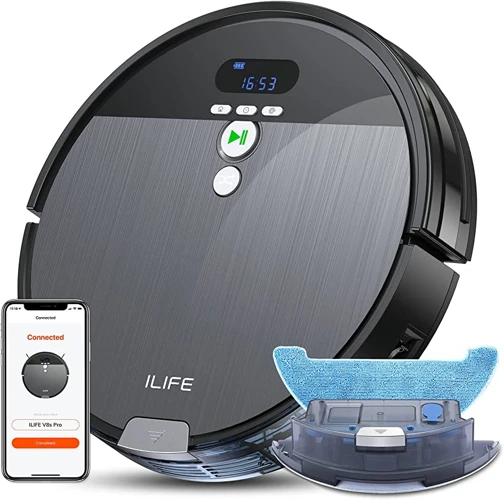
Anti-collision sensors in smart vacuums offer numerous benefits that make cleaning easier, safer, and more efficient. Let’s explore some of these advantages.
Improved Navigation: Smart vacuums outfitted with anti-collision sensors can navigate seamlessly around obstacles, such as furniture and walls, without causing damage. The sensors detect these objects and signal the vacuum to navigate around them, ensuring that furniture and walls remain unscathed.
Enhanced Safety: The anti-collision sensors in smart vacuums ensure that the device does not collide and accidentally injure pets, children or people. This feature provides homeowners with peace of mind, as they can turn on their smart vacuums and leave the house without fearing that someone might get hurt.
Lower Maintenance Costs: Anti-collision sensors help to prevent damage to the vacuum and other items in the house. Conventional vacuums may get damaged if they hit an object or a piece of furniture. Repairs can be costly and time-consuming. The use of anti-collision sensors in smart vacuums reduces the frequency of such accidents and, therefore, lowers maintenance costs.
Better Cleaning Results: Anti-collision sensors in smart vacuums help to increase the efficiency of cleaning by allowing the robot to navigate effortlessly around the room, without wasting time getting stuck on obstacles. With this feature, the vacuum can get into hard-to-reach areas and maintain the cleanliness of the house.
Anti-collision sensors improve the efficiency, safety, and effectiveness of smart vacuums. By detecting obstacles and avoiding collisions, the vacuum can navigate around the house while cleaning efficiently. This results in a superior cleaning experience for homeowners, while simultaneously reducing maintenance costs and eliminating safety risks.
Improved Navigation
Incorporating advanced anti-collision sensors into smart vacuums has resulted in a remarkable improvement in navigation. The use of such sensors allows the vacuum cleaners to navigate around obstacles effortlessly, making them more efficient and user-friendly.
Previously, vacuum cleaners utilized random algorithms to navigate around a room, often resulting in missed spots, wasted time, and inefficient cleaning. However, with the integration of anti-collision sensors such as lidar and camera-based sensors, smart vacuums can now map out the room and follow a systematic cleaning pattern that covers all areas, even hard-to-reach spots such as corners and under furniture.
These sensors allow smart vacuums to detect any obstacles on their way, preventing collisions and potential damage to both the vacuum cleaner itself and the objects in the room. This feature is particularly advantageous in households with children and pets, where the risk of accidents is high. The sensors can detect any sudden movements and adjust the vacuum’s path accordingly to avoid any potential hazards.
Another benefit of improved navigation is that smart vacuums can keep track of their location and resume cleaning from where they left off in case they need to recharge or take a break. This function saves users time and effort, making cleaning less of a hassle.
In essence, the combination of anti-collision sensors and systematic cleaning patterns has brought about a significant improvement in the navigation abilities of smart vacuums. These advancements have made cleaning easier, faster, and more thorough, resulting in a noticeable difference in the cleaning outcomes.
Enhanced Safety
The integration of anti-collision sensors in smart vacuums has greatly enhanced the safety features of these devices. With advanced sensors, smart vacuums can detect and avoid obstacles in real-time, preventing collisions with objects in the room. This is particularly important in households with children, pets, or delicate furniture.
Improved Object Detection: Anti-collision sensors in smart vacuums use advanced technologies such as lidar, ultrasonic, and camera-based sensors to detect objects in their path. The sensors combine data from multiple sources and create a 3D map of the surrounding environment. This allows the vacuum to accurately detect obstacles and avoid them without any human intervention.
Prevention of Damage to Objects: As the sensors detect obstacles, they also prevent damage to those objects. The vacuum adjusts its speed and direction as it gets close to an object, slowing down or stopping completely to prevent any damage.
Prevention of Accidents: A smart vacuum equipped with anti-collision sensors can navigate through a room without bumping into objects or people. This reduces the risk of accidents and injuries caused by conventional vacuum cleaners. With improved safety features, smart vacuums can operate safely even when the user is not present in the room.
Better Protection of the Vacuum Itself: An added benefit of anti-collision sensors is that they protect the device itself. Smart vacuums can be expensive, and accidental damage can be costly to repair. By preventing collisions with objects, the sensors help to extend the life of the vacuum, reducing maintenance costs and increasing the lifespan of the device.
The integration of anti-collision sensors in smart vacuums has greatly improved the safety and reliability of these devices. With advanced object detection and accident prevention capabilities, users can trust their smart vacuums to navigate effectively and safely around their homes. As a result, the demand for these innovative devices is expected to continue growing in the coming years.
Lower Maintenance Costs
One significant advantage that anti-collision sensors bring to the smart vacuum cleaner market is the decrease in maintenance costs. In traditional vacuum cleaners, accidental collisions with walls, furniture, and other obstacles can result in scratches, scuffs, or even significant damage to the device’s body. These damages not only degrade the machine’s aesthetic appeal, but they also impact its functionality over time. Not to mention, repair or replacement costs can quickly add up, which can put a significant dent in your wallet.
However, by incorporating anti-collision sensors into smart vacuums, manufacturers are able to mitigate these issues. Sensors like Lidar, ultrasonic, and infrared sensors allow the vacuum cleaner to recognize and avoid obstacles in its path, reducing the likelihood of collisions. This, in turn, reduces wear and tear on the device’s body and significantly lowers maintenance costs in the long run.
Since smart vacuums can detect obstacles and avoid them, there is no need for bumpers or other costly protective measures, saving you money in the process. As a result, opting for a smart vacuum cleaner equipped with anti-collision sensors can save you time and money on maintenance costs, making it a cost-effective and efficient solution for keeping your home clean. With lower maintenance costs, you can enjoy the benefits of a cleaner home without worrying about the upkeep of your vacuum cleaner.
Better Cleaning Results
Smart vacuums equipped with anti-collision sensors offer better cleaning results, which is a key factor in their growing popularity. These sensors help the vacuum navigate around obstacles, ensuring no areas are missed during the cleaning process.
The precise mapping capabilities of the sensors allow the vacuum to clean with more efficiency and thoroughness, reducing the time and effort required for cleaning. This means that consumers who invest in smart vacuums with anti-collision sensors can enjoy a consistently clean home without having to spend hours vacuuming themselves.
Anti-collision sensors also allow the vacuum to detect and avoid sensitive or fragile objects, such as furniture, decorative items, or plants, ensuring they are not damaged or knocked over during the cleaning process. This is particularly useful for households with many delicate objects or pets.
Anti-collision sensors can also detect small particles and debris in carpets or on floors that the human eye may not notice. With this advanced technology, smart vacuums can clean even the smallest particles and ensure complete sanitation of the surface, improving indoor air quality and reducing allergens.
Integrating anti-collision sensors into smart vacuums is a game-changer in the cleaning industry, providing better cleaning results that consumers are seeking along with more efficient and safer cleaning processes.
The Latest Anti-Collision Sensor Innovations in Smart Vacuums
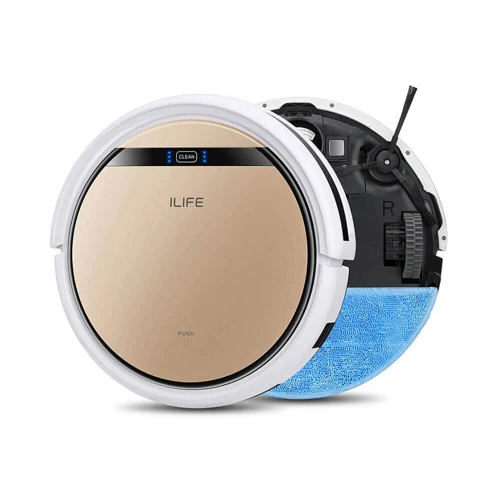
As smart vacuums become increasingly popular, innovative anti-collision sensors are being developed to improve their performance. One type of sensor that has been gaining traction in the industry is lidar sensors, which use laser light to detect obstacles in their path. These sensors accurately map out the room and create a virtual representation to help the vacuum navigate.
Another type of sensor is ultrasonic sensors, which use sound waves to detect obstacles. They emit sound waves and measure the time it takes for them to bounce back, creating a map of the room. Some vacuums even use a combination of lidar and ultrasonic sensors to improve accuracy.
Camera-based sensors are also becoming more common in smart vacuums. These sensors use a camera to detect objects and obstacles, then use the information to make decisions about how to move around the room. They can even recognize objects and avoid them more efficiently.
Infrared and laser sensors are also being used in some smart vacuums. Infrared sensors detect heat, allowing the vacuum to detect people and pets and avoid running into them. Laser sensors create a virtual map of the room, allowing the vacuum to navigate around obstacles more efficiently.
All of these sensor innovations have one thing in common: they improve the vacuum’s ability to navigate and avoid obstacles, creating a more efficient and effective cleaning experience for users. As technology advances and new sensor innovations are introduced, we can expect even more exciting developments in the smart vacuum market.
Lidar Sensors
One of the latest technologies employed in anti-collision sensors for smart vacuums is the use of Lidar sensors. Lidar stands for Light Detection and Ranging, and these sensors use lasers to map the environment and detect obstacles in real-time. The special feature of Lidar sensors is that they can also detect changes in elevation, making them ideal for cleaning robots that need to navigate over thresholds and steps.
The working principle of Lidar sensors is based on the concept of time of flight. A laser beam is emitted from the sensor and directed towards the environment. The beam reflects off any obstacle in the path, and the time it takes for the beam to return to the sensor is measured. Since the speed of light is constant, the distance to the obstacle can be calculated by using the time measurement. By repeating this process multiple times per second, the Lidar sensor can create a 3D map of the environment in real-time.
The advantages of Lidar sensors in smart vacuums are numerous. Firstly, they provide highly accurate measurements of distances, which improves the robot’s ability to navigate through the cleaning area. Secondly, Lidar sensors can detect even low-reflective surfaces, such as dark carpets or walls. Thirdly, their ability to detect changes in elevation makes them ideal for navigating over thresholds and carpets without getting stuck. These features result in better cleaning results and fewer collisions.
The future of Lidar sensors in the smart vacuum cleaner market looks bright. More and more major players are adopting Lidar technology in their products, and the price of Lidar sensors is decreasing rapidly, making them more accessible to smaller-scale manufacturers. As the technology keeps evolving, we can expect even more accurate and affordable Lidar sensors, which will further enhance the performance and safety of smart vacuum cleaners.
Ultrasonic Sensors
When it comes to anti-collision sensors in smart vacuum cleaners, ultrasonic sensors are one of the most popular and effective types available. These sensors emit high-frequency sound waves that bounce off surfaces and objects in the vacuum’s path, allowing it to detect and avoid obstacles.
Using ultrasonic sensors in smart vacuums provides several advantages. Firstly, they are highly accurate in detecting small and large obstacles, making them particularly useful for avoiding furniture, toys, cables, and other common household items that can be missed by other sensor types. Additionally, ultrasonic sensors are effective in detecting transparent or reflective surfaces, which can be difficult for other sensor types to detect.
Another benefit of ultrasonic sensors is that they are not affected by changes in lighting or ambient conditions, making them ideal for use in any room or environment. They are also relatively inexpensive to manufacture, which helps keep the production costs of smart vacuums down.
However, there are some potential limitations to using ultrasonic sensors in smart vacuums. One potential issue is that they may not be effective in detecting objects that are placed directly above or below the vacuum’s line of sight. Another limitation is that in very large rooms, multiple sensors may be needed to cover the entire space and ensure accurate obstacle detection.
Despite these limitations, ultrasonic sensors remain a popular and effective choice for anti-collision sensors in smart vacuum cleaners. As the technology continues to evolve and improve, we can expect to see new innovations and applications for ultrasonic sensors in the smart home technology industry.
Camera-Based Sensors
Camera-based sensors are another type of anti-collision sensor that is becoming increasingly popular in smart vacuum cleaners. These sensors use a camera to capture images of the vacuum’s surroundings, allowing it to create a detailed map of the room.
The Benefits of Camera-Based Sensors
One of the benefits of camera-based sensors is that they are highly accurate. They can detect smaller objects and obstacles that other sensors might miss, which is important when it comes to avoiding collisions.
Additionally, camera-based sensors can be used to create a more detailed map of the room. This can improve the vacuum’s navigation, as it can create a more accurate path to follow. It can also help the vacuum to avoid areas that have already been cleaned.
How Camera-Based Sensors Work
Camera-based sensors work by capturing images of the vacuum’s surroundings. These images are processed using computer vision algorithms to create a map of the space.
The vacuum then uses this map to navigate around the room. As it moves, the camera continues to capture images, which are used to update the map in real-time. This allows the vacuum to adjust its course if it encounters an obstacle.
The Drawbacks of Camera-Based Sensors
One of the drawbacks of camera-based sensors is that they can be more expensive than other types of sensors. Additionally, they can be affected by low light conditions, which can impact their accuracy.
The Future of Camera-Based Sensors
Despite its drawbacks, camera-based sensors are becoming more common in smart vacuum cleaners. As technology continues to evolve, it is likely that these sensors will become even more sophisticated and accurate.
In the future, we may see camera-based sensors combined with other types of sensors to create a more comprehensive anti-collision system. This could lead to even more accurate mapping and navigation, as well as improved cleaning results.
Infrared and Laser Sensors
Infrared and laser sensors are among the most popular anti-collision sensors used in smart vacuum cleaners today. These sensors work by emitting a beam of infrared or laser light that bounces off nearby objects and returns to the sensor. The sensor then uses this data to determine the distance and location of the object and adjusts the vacuum’s direction accordingly to avoid collision.
Infrared sensors are the more affordable option and are commonly used in entry-level smart vacuums. They have a shorter range than laser sensors but are still effective for detecting nearby obstacles. Infrared sensors have become the standard in smart vacuum cleaners due to their low cost and high accuracy in detecting obstacles.
Laser sensors, on the other hand, offer better accuracy and range. They can detect objects several feet away and can map a room in real-time, creating a detailed floor plan for the vacuum to follow.
One of the latest anti-collision sensor innovations in smart vacuums is the combination of infrared and laser sensors. This hybrid approach offers the best of both worlds – the accuracy and range of laser sensors with the lower cost of infrared sensors. It allows the vacuum to create a detailed map of the room and detect obstacles in real-time, providing a more efficient and thorough cleaning experience.
The use of infrared and laser sensors in smart vacuums has greatly improved the efficiency and performance of these devices. They not only prevent collisions but also enable the vacuum to navigate more effectively around objects and furniture in the room. This leads to better cleaning results and lower maintenance costs, as the vacuum is less likely to get stuck or damaged.
Infrared and laser sensors are essential components of any smart vacuum cleaner. Their accuracy and efficiency have greatly improved the performance of these devices, leading to increasing demand from consumers for more advanced sensors. As the market continues to grow and evolve, we can expect to see more innovative sensor technologies that further enhance the performance of smart vacuums.
The Impact of Anti-Collision Sensors on the Smart Vacuum Cleaner Market
The integration of anti-collision sensors in smart vacuums has had a significant impact on the overall smart vacuum cleaner market. This impact can be analyzed through multiple lenses including the increasing popularity of smart vacuums, rising demand for advanced sensors, and emerging players in the market.
Increasing Popularity of Smart Vacuums
The use of smart vacuums has been increasing at a rapid pace globally. Consumers are becoming more aware of the convenience and efficiency provided by smart vacuums, especially those equipped with anti-collision sensors. One of the primary reasons behind the increasing popularity of smart vacuums is the ability to automate cleaning while providing a high level of accuracy and precision, thanks to the sensors. Smartphone applications and voice assistants have made it easier for homeowners to operate the vacuums, further fueling their popularity.
Rising Demand for Advanced Sensors
Anti-collision sensors are critical to navigate around obstacles without colliding into furniture or walls. The ability of smart vacuums to provide efficient cleaning without damaging household items has made them a popular choice for busy households. As a result, there is a growing demand for advanced sensors that can provide even greater accuracy and precision. Lidar sensors, for example, provide a high degree of accuracy and can detect even the tiniest of obstacles. Ultrasonic sensors can provide a wider range of detection and can help navigate around large obstacles easily. These advanced sensors, in turn, are driving the development of smarter and more sophisticated smart vacuums.
Emerging Players in the Smart Vacuum Market
The increasing popularity of smart vacuums and rising demand for advanced sensors has led to a surge of new players in the market. Large tech companies are now investing in the smart vacuum market, and multiple startups are working on developing innovative and smarter products. The emergence of new players and their innovative solutions is driving competition in the market, which in turn leads to better products for consumers.
The integration of anti-collision sensors has had a profound impact on the smart vacuum cleaner market. From improving efficiency and convenience to driving innovation and competition, the impact of anti-collision sensors is felt throughout the industry. As new technologies emerge, it is likely that the impact of anti-collision sensors will continue to shape the smart vacuum market for years to come.
Increasing Popularity of Smart Vacuums
The smart vacuum cleaner market is rapidly gaining popularity in recent years as technology continues to advance. Consumers are recognizing the convenience and efficiency of smart vacuums over the traditional ones. With the increasing demand for automated cleaning systems, smart vacuums have become a go-to solution for keeping homes clean and tidy.
The integration of artificial intelligence and machine learning technologies in smart vacuums allows them to learn and adapt to the cleaning patterns of households, making them more efficient and effective in removing dirt and debris. Additionally, the ability to control smart vacuums remotely using smartphones or voice command features has made them even more attractive to consumers.
Smart vacuums are designed to seamlessly navigate around obstacles, making them ideal for homes with pets or children. The incorporation of anti-collision sensors has enabled smart vacuums to avoid collisions with objects and people. This feature provides the assurance that smart vacuums can clean without damaging furniture or injuring family members or pets.
With the rising popularity of smart home technology, homeowners are increasingly looking to smart vacuums to complement their busy lifestyles. As such, the smart vacuum market is expected to experience rapid growth in the coming years. According to a recent market research report, the global smart vacuum cleaner market is expected to reach a value of $6.7 billion by 2027, with a Compound Annual Growth Rate (CAGR) of 18.7% from 2020 to 2027.
The demand for smart vacuums is on the rise, fueled by the convenience, efficiency, and automation they offer. Coupled with anti-collision sensor technology, smart vacuums have become an essential appliance in modern homes. As the smart vacuum market continues to evolve, manufacturers are expected to introduce more sophisticated features and technologies to meet the demands of consumers.
Rising Demand for Advanced Sensors
It is no secret that the smart vacuum cleaner market is expanding rapidly. With more and more consumers opting for these devices, the demand for advanced sensors is on the rise. While traditional vacuum cleaners had limited sensing capabilities, smart vacuums are equipped with a range of sensors that allow them to navigate around obstacles and clean hard-to-reach areas with ease.
The demand for anti-collision sensors has been on the rise due to consumer preferences for smart vacuums that can operate autonomously. More advanced sensors can help these devices to better perceive their environment, avoid collisions, and gather data necessary for optimal cleaning. Consumers are increasingly looking for the latest anti-collision sensor innovations, such as Lidar sensors, ultrasonic sensors, camera-based sensors, infrared and laser sensors, to get more out of their smart vacuum cleaners.
The demand for other advanced sensors is also on the rise as more consumers invest in smart home technology. For instance, advanced navigation sensors such as GPS and gyro sensors are gaining popularity in the market. These sensors help smart vacuums to map out the room they are cleaning and navigate around furniture with impressive accuracy. Additionally, other sensors, such as infrared distance sensors and dust sensors, can detect the composition of the surrounding environment, enabling smart vacuums to adjust their cleaning methods accordingly.
As the demand for smart vacuums with these advanced sensors increases, manufacturers have been working to meet this need by releasing new models and upgrading their current product lines. Some companies now offer smart vacuums with multiple sensors, giving consumers more control over their cleaning process.
All in all, the rising demand for advanced sensors in smart vacuums is a testament to the increasing popularity of these devices in the smart home market. As consumers look for more convenient and efficient ways to maintain their homes, smart vacuums with advanced sensors are becoming essential. With manufacturers continually pushing the boundaries and developing new innovations, the future of the smart vacuum cleaner market looks bright.
Emerging Players in the Smart Vacuum Market
As the demand for smart vacuums continues to grow, new players are entering the market with innovative anti-collision sensor technology. One such company is Eufy, which offers a range of affordable and efficient smart vacuums equipped with advanced sensors that prevent collisions and drops. Their devices also feature compatibility with Amazon Alexa and Google Assistant, making them an attractive option for tech-savvy consumers.
Another emerging player in the smart vacuum market is Roborock. Their flagship model, the Roborock S7, boasts LIDAR navigation and ultra-precise anti-collision sensors that detect objects in a 360-degree radius. This allows the device to move effortlessly around the house, even in dark corners and narrow spaces. The Roborock S7 also features advanced mopping capabilities, making it a truly versatile cleaning device.
A newcomer to the smart vacuum market, Tineco, is quickly gaining recognition for their high-performance smart vacuums that utilize iLoop smart sensor technology. This technology detects dust and debris in real-time, enabling the device to ramp up suction power in areas that require extra cleaning. The Tineco Pure One S12 also features anti-collision sensors that operate using a combination of audio and infrared signals, providing an additional layer of protection for furniture and delicate objects.
Other notable players in the smart vacuum market include Xiaomi, Ecovacs, and SharkNinja, each offering their own unique spin on anti-collision sensor technology. As more and more consumers begin to adopt smart vacuums into their homes, it’s clear that the competition between these emerging players will continue to drive innovation and push the boundaries of what’s possible with anti-collision sensor technology.
Conclusion
After exploring the various innovations in anti-collision sensors and their impact on the smart vacuum cleaner market, it is clear that these sensors have become integral components of modern smart vacuums. The latest anti-collision sensor technologies like lidar sensors, ultrasonic sensors, camera-based sensors, and infrared and laser sensors have enabled smart vacuums to navigate more efficiently and avoid collisions, resulting in better cleaning results.
Additionally, the use of anti-collision sensors has proven to be a game-changer in terms of enhanced user safety and lowered maintenance costs. With the increasing popularity of smart vacuums and the rising demand for advanced sensors, we can expect to see newer and more innovative anti-collision sensor technologies in the near future.
Overall, it can be concluded that the integration of anti-collision sensors in smart vacuums has revolutionized the cleaning industry and made household cleaning a breeze. As consumers continue to embrace smart home technology, the demand for advanced and innovative smart vacuums will only continue to increase, making anti-collision sensors a crucial feature for any modern vacuum cleaner.
Frequently Asked Questions
What is a smart vacuum cleaner?
A smart vacuum cleaner is a robotic cleaning device that can be programmed to clean your home or office without human intervention.
What are anti-collision sensors?
Anti-collision sensors are a type of sensor that enables a robot to detect and avoid obstacles in its path, thus preventing collisions.
How do anti-collision sensors work?
Anti-collision sensors work by emitting signals or waves that bounce back off nearby objects. The robot can then use this information to calculate the distance to the obstacle and adjust its path accordingly.
What are the advantages of using a vacuum cleaner with anti-collision sensors?
The advantages of using a vacuum cleaner with anti-collision sensors include improved navigation, enhanced safety, lower maintenance costs, and better cleaning results.
What are lidar sensors?
Lidar sensors are a type of sensor that use lasers to create a 3D image of an object or environment. They are commonly used in autonomous vehicles and robots to detect and avoid obstacles.
What are ultrasonic sensors?
Ultrasonic sensors are a type of sensor that use sound waves to detect objects or obstacles in their path. They are commonly used in robotics and automation applications.
What are camera-based sensors?
Camera-based sensors use visual information to detect and identify objects in their path. They are commonly used in autonomous vehicles and robots for navigation and obstacle avoidance.
What are infrared and laser sensors?
Infrared and laser sensors are a type of sensor that use light to detect objects or obstacles in their path. They are commonly used in robotics and automation applications.
What is the impact of anti-collision sensors on the smart vacuum cleaner market?
The impact of anti-collision sensors on the smart vacuum cleaner market has been significant, as consumers have come to expect advanced navigation and obstacle avoidance capabilities in their robotic cleaning devices.
What is the future of anti-collision sensors in smart vacuum cleaners?
The future of anti-collision sensors in smart vacuum cleaners is likely to involve further advancements in technology, such as the integration of artificial intelligence and machine learning systems to improve navigation and obstacle avoidance capabilities.



